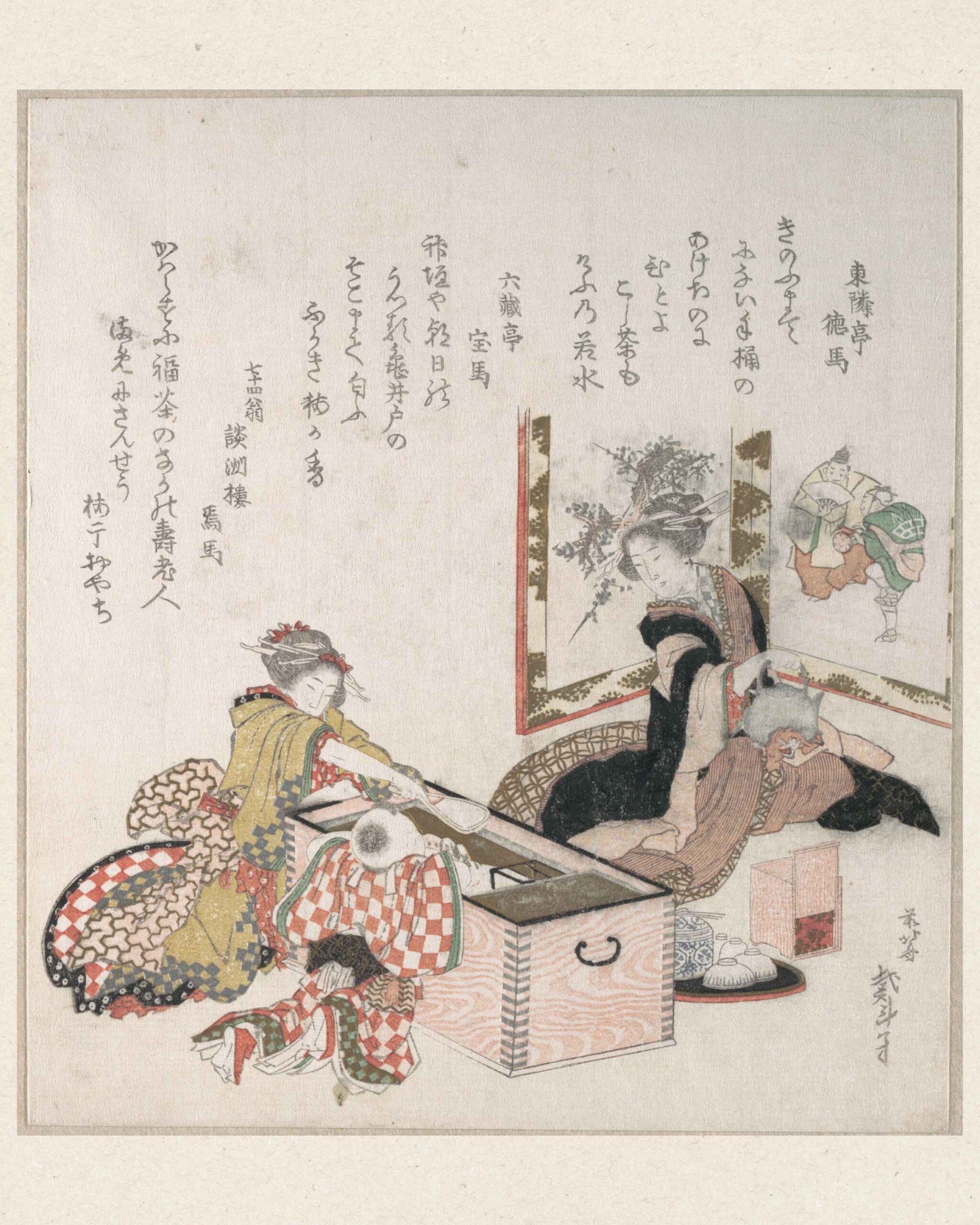

Featured Image: Women Preparing Tea Around the Fire-Holder, Katsushika Hokusai, 1816. The Metropolitan Museum of Art.
What Is Ritual, Really?
Words ISOLDE
From Kyoto teahouses to Turkish baths, gestures that gave health its meaning.
Wellness today is sold as optimization. Wake earlier, stretch longer, hydrate smarter, log the minutes, track the heartbeats. It is a system engineered for efficiency, as if health could be treated like a quarterly report. But rituals were never about efficiency. They weren’t conceived to shave seconds off the morning or to burn precisely 350 calories. Rituals were built for meaning. They are the architecture of wellness itself — older than the word, deeper than the market, and, unlike any routine, impossible to outsource to an app.
Consider the smoke rising from incense in a Kyoto temple, or the sound of water striking stone in an onsen. Think of the steady hand whisking matcha into froth, or the oil poured over skin in an Ayurvedic massage. These gestures don’t optimize. They mark. They orient life around something symbolic, sensory, and enduring. To speak of ritual is not to invoke nostalgia or exoticism, but to name the original framework through which human beings understood what it meant to live well.
“Ritual is less about what we do than about what it means.”
The Ancient Core
Across Asia, rituals have carried not just the promise of health, but the weight of philosophy. In Japan, the tea ceremony is not a beverage service but a theatre of discipline and aesthetics: the angle of the bow, the grain of the cup, the deliberate stillness before the sip. Every movement rehearses respect, impermanence, and beauty. The body drinks, but the mind is the true participant.
In China, the burning of incense once marked more than fragrance. It linked the human to the cosmic, the temporal to the eternal. Herbal medicine functioned similarly, not as a “hack” but as continuity with forces older than the body itself — qi, balance, the cycles of nature.
India’s Ayurveda made ritual into daily rhythm. Dinacharya, the prescribed order of waking, cleansing, eating, and sleeping, placed individual lives within the cosmic order. To bathe was not only to remove dirt; it was to align oneself with the universe.
Even outside the explicitly spiritual, bathing traditions — Korean jjimjilbangs, Turkish hammams, Roman thermae — became both cyclical cleansing and social architecture. They were never rushed. They repeated because repetition itself was meaning.
“Across cultures, the simplest acts became vessels for philosophy.”
The sweep of ritual is wider still. In Bali, daily offerings of rice, flowers, and incense — canang sari — are laid at thresholds and shrines to maintain balance between humans and spirits. In Vietnam, ancestor altars serve as the household’s axis, where incense and food offerings tether the present generation to the past. These practices, though varied, share qualities: they repeat without becoming mechanical, they involve the senses, and they attach the body’s small gestures to a larger frame — social, spiritual, or cosmic. They persist precisely because they are irreducible to outcomes alone.
Ritual vs. Routine
This is where the modern West stumbled. In translation, ritual became routine. What was once symbolic became merely practical. We renamed rituals as “habits” and “self-help practices,” stripped of ceremony and retooled for productivity. A cold shower might jolt the system awake, but it rarely carries the gravitas of a hammam. Journaling became a five-minute hack for mental clarity, instead of a dialogue with the divine.
Rituals are meaning-driven; routines are outcome-driven. One asks, what does this signify? The other, what does this achieve? Rituals bind communities; routines isolate individuals with their checklists. Rituals embrace slowness and difficulty; routines worship ease.
The contrast is not trivial. A Japanese tea ceremony can last four hours, each gesture weighted with symbolism. Compare this to the Western “tea ritual” — often reduced to a quick brew in a mug, marketed for its antioxidants. The same object, tea, becomes either a philosophy or a convenience, depending on whether it is framed as ritual or routine.
There is a certain mischief in noting that the most downloaded meditation apps are themselves the antithesis of ritual: soundtracks for efficiency disguised as transcendence. We tell ourselves that we’re “being mindful,” while tapping “skip intro” like any other form of entertainment. To call such practices rituals is like calling a protein bar a feast.
The difference matters. Because when meaning is lost, repetition alone becomes hollow. And when repetition is hollow, wellness becomes another chore — an endless self-improvement loop that promises progress but delivers fatigue.
“Where routine exhausts, ritual endures.”
Closing Reflection
Ritual is not wellness with accessories. It is the oldest human technology for making life meaningful, binding the private to the communal, the fleeting to the eternal. To bathe, to burn, to bow, to sip: these gestures remind us that health is not just a body in tune, but a life in order. Without ritual, wellness is little more than exercise in disguise. With ritual, wellness regains what it was always meant to be — an art of living, rather than a task of surviving.
Words ISOLDE